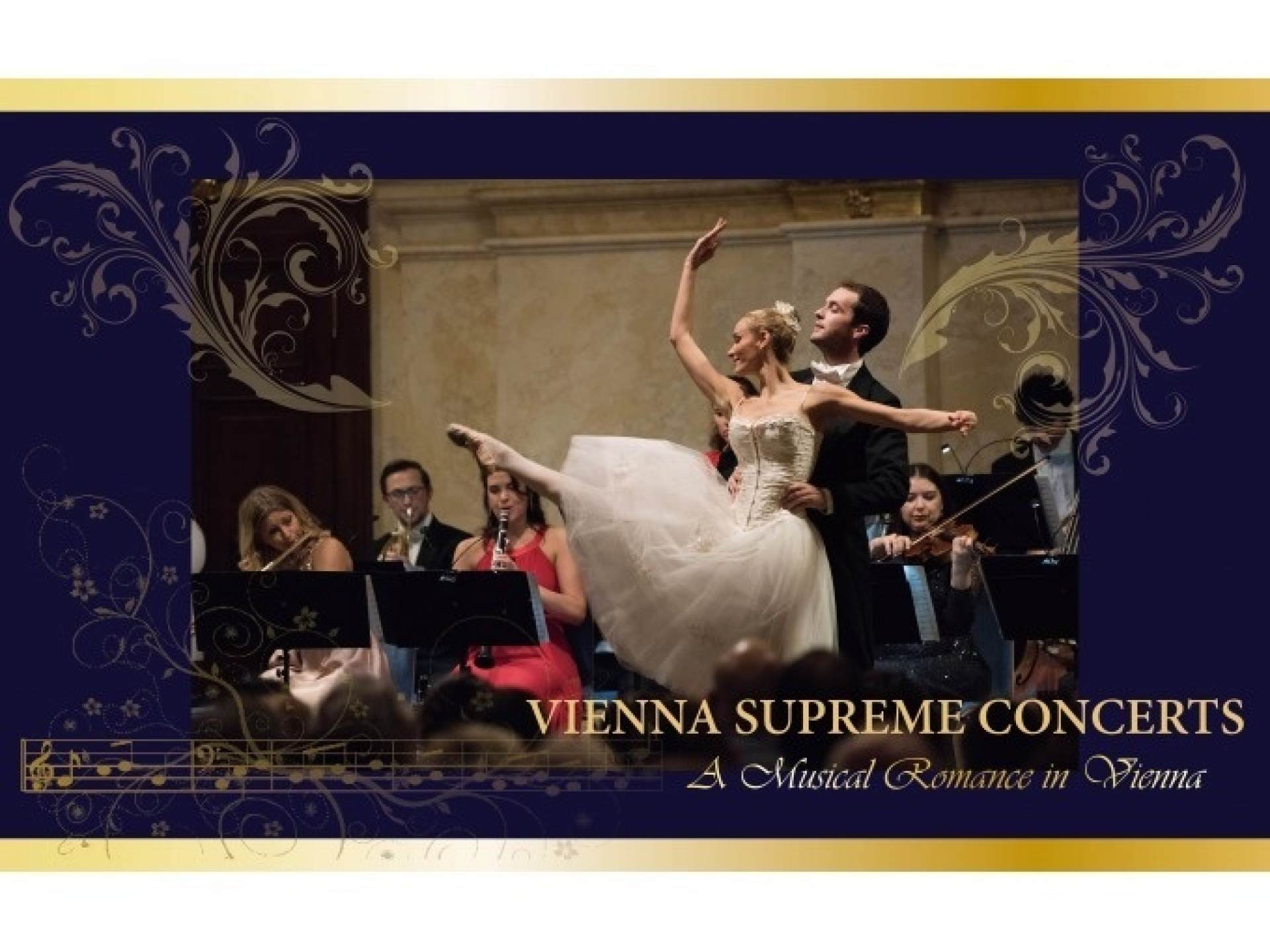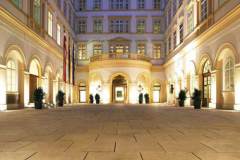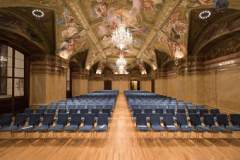Vienna Supreme Concerts at Palais Niederösterreich
Mo | Tu | We | Th | Fr | Sa | Su |
Program and cast
Admission: 19:45
Start: 20:15 (No Intermission)
End: 21:40
Dress Code: None
Capacity: 170 - 300
City center area: Yes
Air-conditioned: Yes
Wheelchair accessible: Yes
Highlights of the Program
The Bat is one of the most famous Operettas composed by Johan Strauss and premiered in Vienna in 1874 which is often referred to as “The Queen of Operettas”. Its Ouvertüre counts as one of his biggest creations which with its virtuosity present a challenge even for most skilled musicians. This funny and bourgeois world of 18th century Vienna is brought up on the stage of many theaters, especially during the carnival and New Year’s Eve time.
Where the Lemons Blossom in May of 1874 Johann Strauss Jr performed his first ever concert in Italy. Especially for the occasion he composed a waltz for his Italian audience which originally was named „Bella Italia“. In Vienna, afterwards, he changed the name of this work based on Johann Wolfgang von Goethes mignon “Do you know the land where the lemons blossom” to its current name “Where the lemons Blossom”.
The Sound of Music - Viennese waltz has its origins back in 12th and 13th century. Most of dance historians track its roots to the old “Dreher” or “Ländler” which were until the 19th century most important folklore dances. The most famous “Ländler” which was also performed in the movie the Sound of Music of 1965 will bring you back in time for 900 years.
Offenbachs Fantasy Jacques Offenbach was a German-French composer which is seen as founder of the modern Operetta. His most famous pieces include „Can-Can“ from „Orpheus in the Underworld“ and „Barcarole“ from „The Tales Hoffmann “. Johann Strauss Jr. met with him in Vienna in 1863 and he told him “you have to write Operettas” which had great influence on young Strauss. In February 1871 the first Operetta from Johann Strauss Jr. called “Indigo and 40 thieves” held its premiere.
The Magic Flute is even nowadays Wolfgang Amadeus Mozart most performed opera worldwide. It premiered in Vienna in 1791 and was an instant success. In second part of the 18th century Viennese Clown and Magicians opera was established. Typical for this opera is the theme where love concurs against all odds and threats.
The Blue Danube Waltz is the most famous waltz composed by Johann Strauss Jr. and soon became a secret anthem of Austria. It is played every year at midnight at New Years Eve and it is like a lucky charm for the following year.
Turkish March a.k.a Rondo Alla Turca Turkish March is the third movement from one of the most famous piano sonata of Wolfgang Amadeus Mozart, Sonata No. 11 in A major. Mozart wrote it in Vienna in 1783/84. The movement has that magical combination of lightness, joy, elegance and rhythmic motion, so typical for Mozart’s music.
The Radetzky March is a march composed by Johann Strauss Sr. and it was dedicated to the Field Marshal Graf Radetzky von Radetz. The annual New Year’s Concert of the Vienna Philharmonic is almost always closed by this piece. The distinctive rhythm (tatadám, tatadám, tatadámdámdám = 3 Anapests und 1 Iambus) has contributed a lot to the high popularity of this march.
Niederösterreich Palace
Palais Niederösterreich’s history has significance on a political and on a social level and its presence can be felt in the premises to this day. The beginnings date back to the late Middle Ages. As the political representative of lords, knights, prelates, and cities, the estates general acquired the villa in order to be in the immediate vicinity of the sovereign and to hold meetings in Vienna. Valuable features of this late Gothic villa, such as its chapel and the Gotische Zimmer – Gothic Room, are still intact.The Renaissance-style Landtagssaal – Parliament Hall – was built and vaulted in the middle of the 16th century. The Provincial Parliament of Lower Austria took over the villa from the estates general after the people’s representation came to an end in 1848, the year of the revolution. Citing the right of self-determination of the people, German-speaking parliamentary members of the Upper House formed the ‘Provisional National Assembly of the Independent Austro-German State’ in the villa. The representatives of the people of Vienna and Lower Austria used the villa jointly until 1921. The villa has belonged to the Lower Austrian provincial government since Vienna gained independence on 1st January 1922. The renovation was carried out in accordance with the regulations for listed buildings and Palais Niederösterreich has since been used in its present form as a center for events. Remnants of the foundations of a medieval building – presumably the ‘House of Liechtenstein’ – were found in the courtyard during the conversion and restoration work between 2002 and 2004. Alongside a wide variety of glass and ceramic vessels, simple and fine tableware were also found.
The Parliament Hall
Four historic staterooms and several spacious foyers in the upper and ground floors, as well as the courtyard and balcony make the palace a versatile event venue. With its stately ceiling fresco and a popular choice for concerts, conferences and gala dinners, the Landtagssaal – Parliament Hall – is the centerpiece of this magnificent event venue.
The Renaissance-style Landtagssaal – Parliament Hall – was built and vaulted in the middle of the 16th century. The Landtagssaal was furnished during the Baroque period with magnificent scagliola on the walls and Antonio Beduzzi’s impressive ceiling fresco, which symbolises glory and honour and is the largest continuous ceiling mural in Austria. Besides being a place where political matters were dealt with, the Landtagssaal was also a popular venue for balls and concerts with many major world premieres being held there in the 18th and 19th centuries.

 EN
EN DE
DE IT
IT FR
FR ES
ES RU
RU JP
JP RO
RO
 Seating plan
Seating plan 
